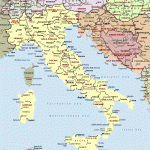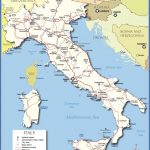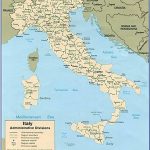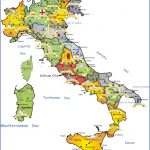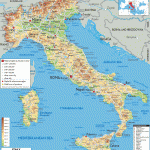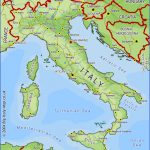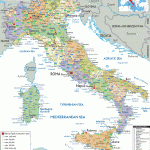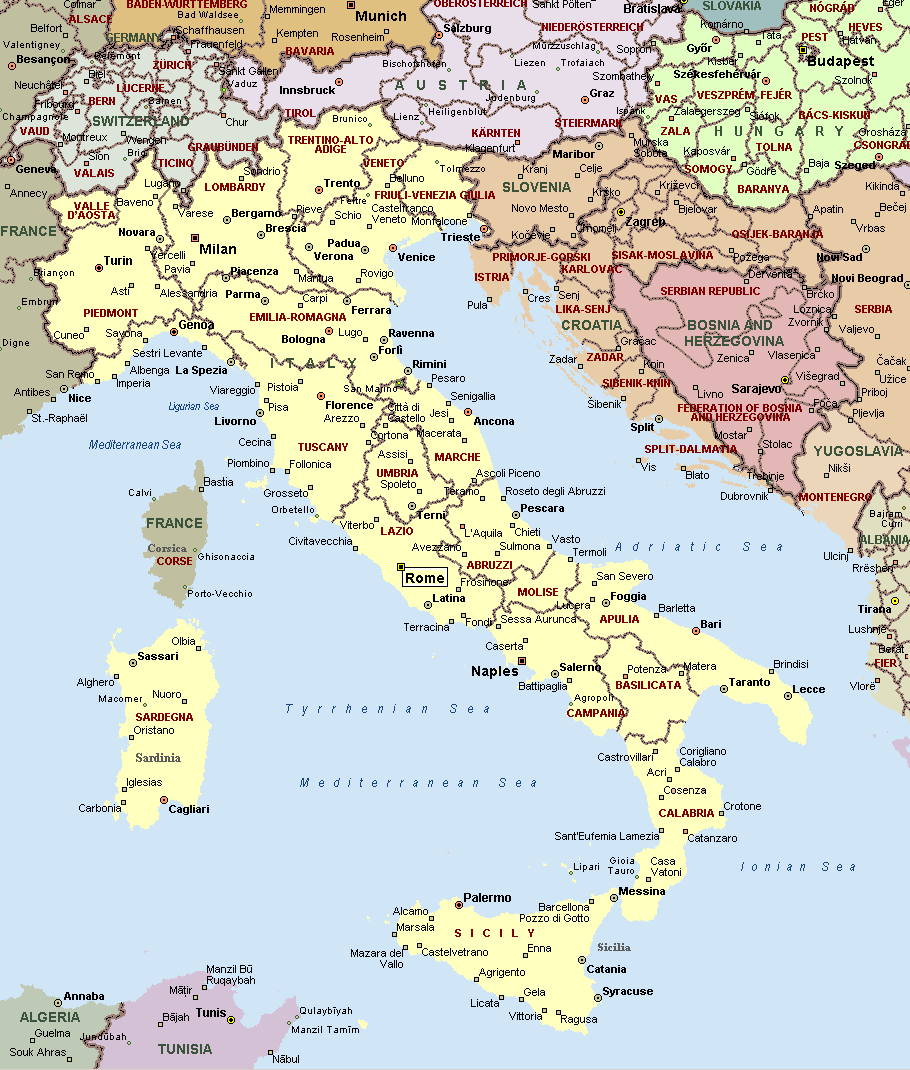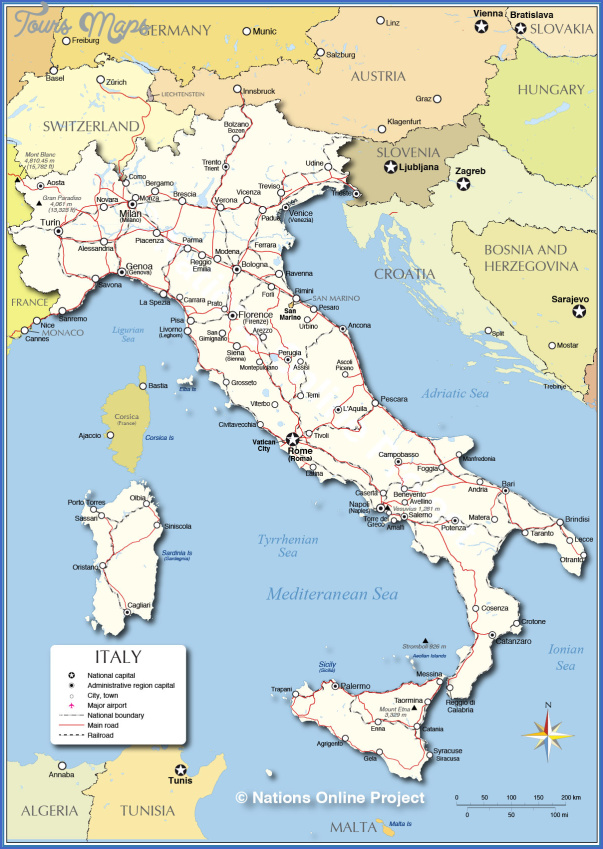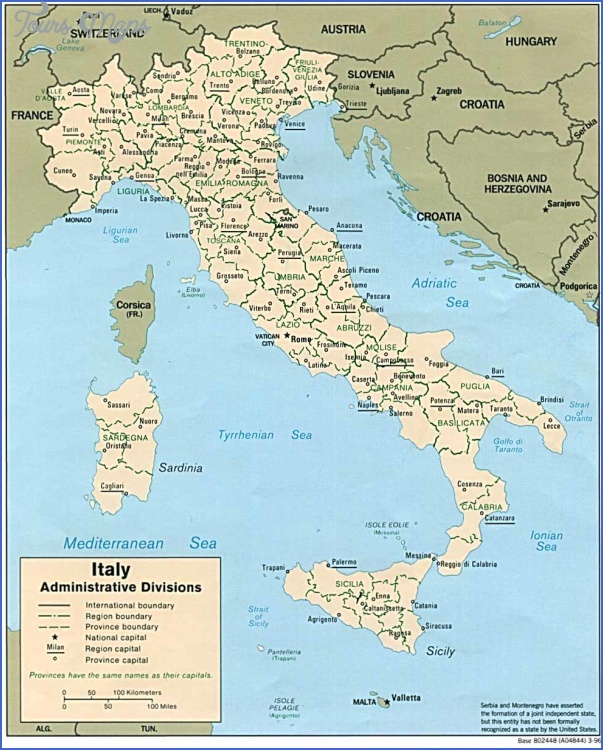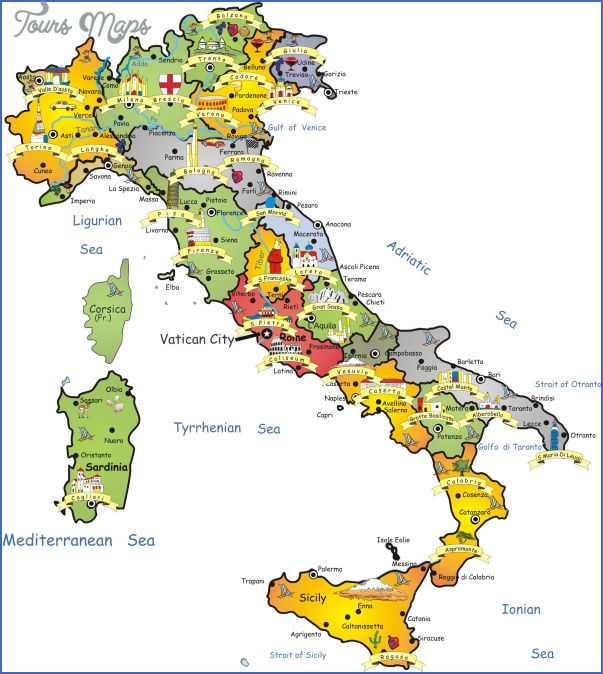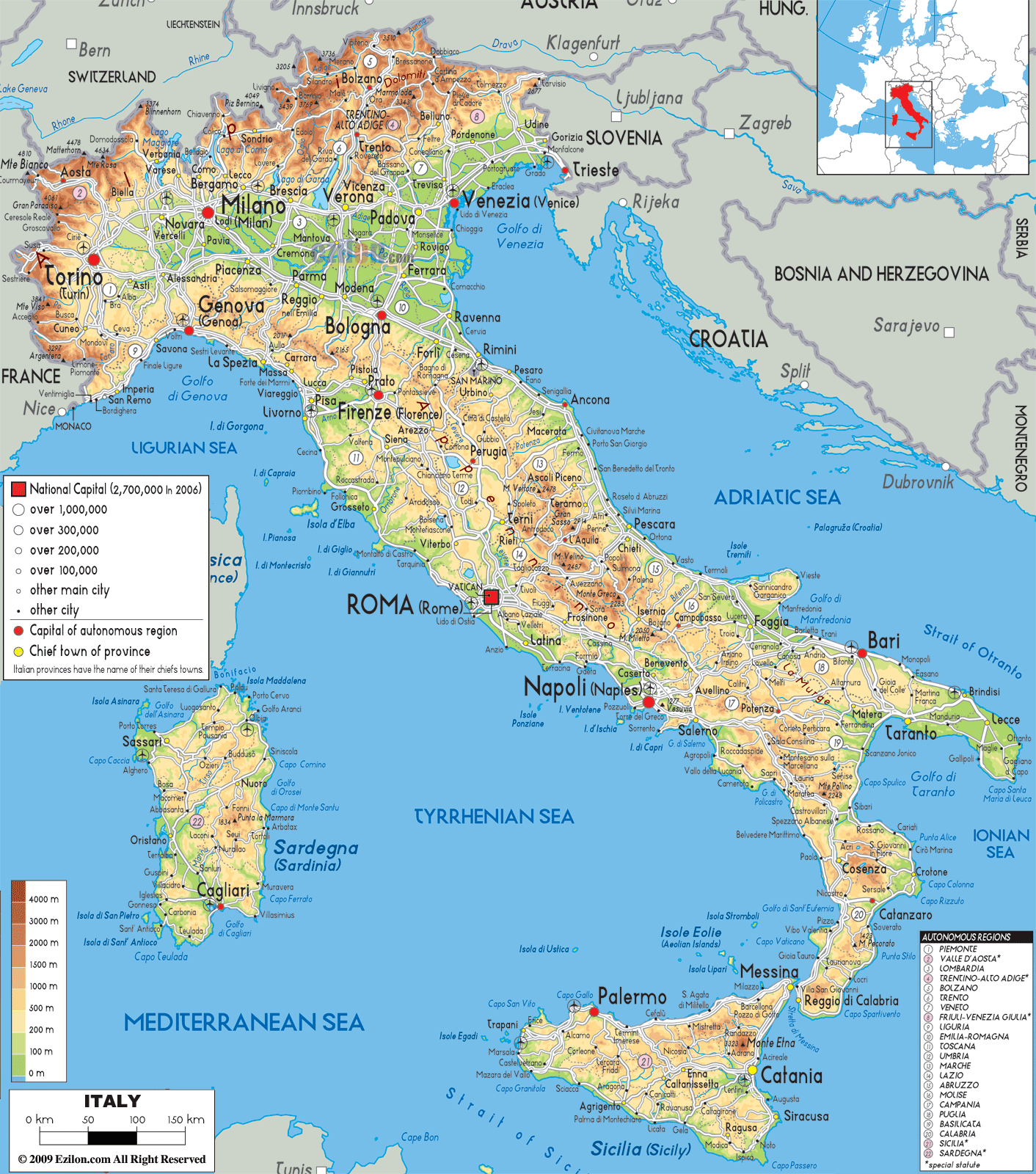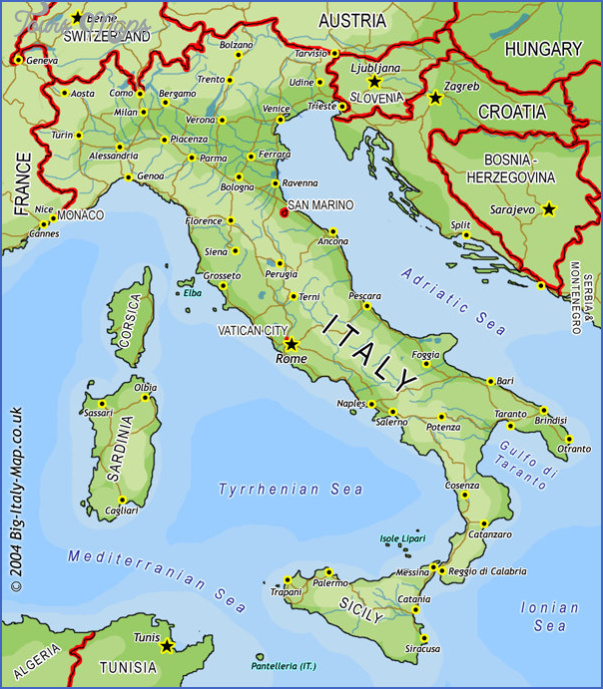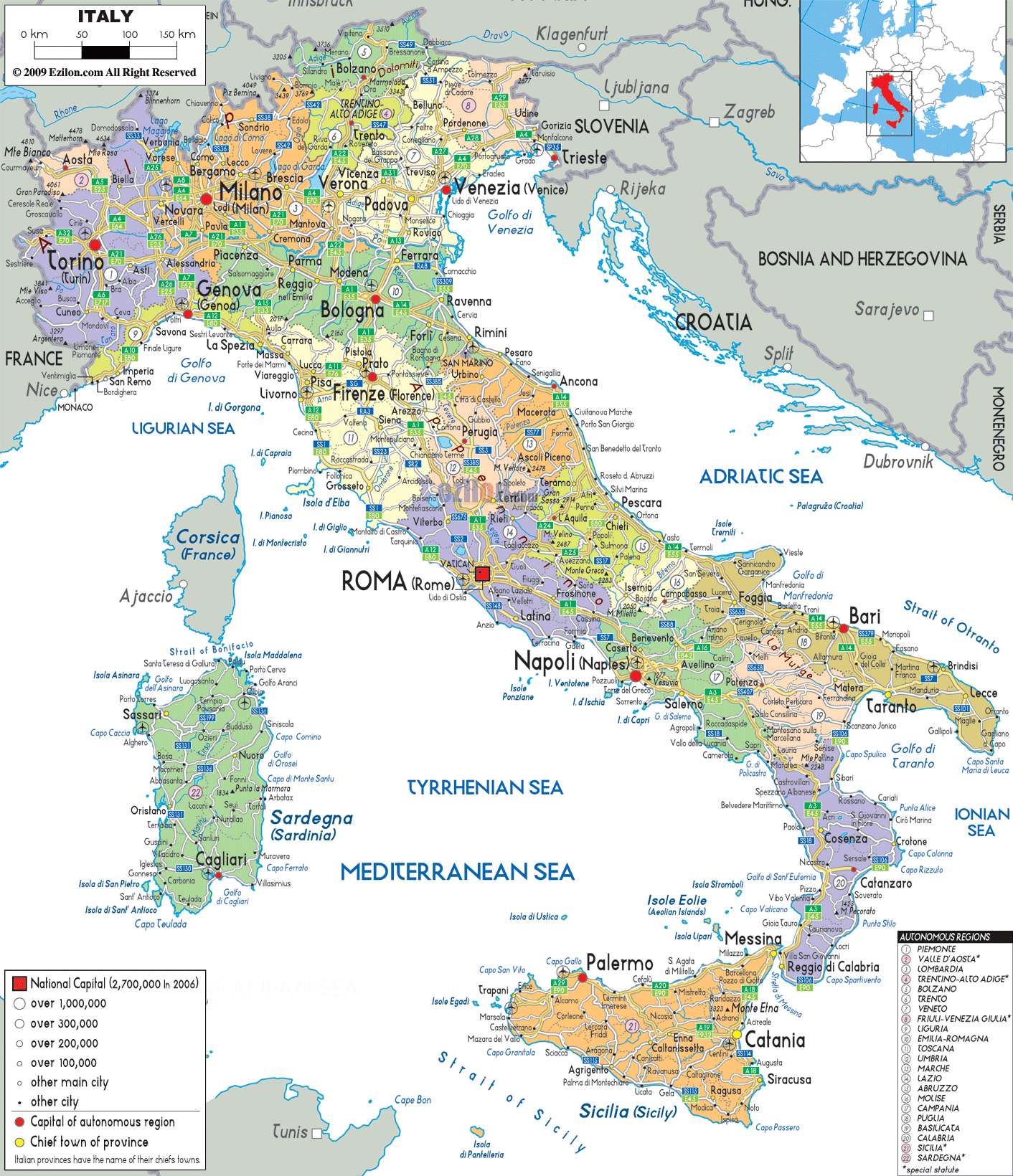Italy Map
TRANSPORTATION
BY PLANE. Rome’s international airport, known as both Fiumicino and Leonardo da Vinci, is served by most major airlines. You can also fly into Milan’s Malpensa or Linate airports or Florence’s Amerigo Vespucci airport. Alitalia (US 800-223-5730; UK 870 544 8259; www.alitalia.com) is Italy’s national airline and may offer low-season youth fares.
BY TRAIN. The Italian State Railway Ferrovie dello Stato, or FS (national information line s 147 88 80 88; www.fs-on-line.com), offers inexpensive and efficient service. There are several types of trains: The locale stops at every station on a particular line; the diretto makes fewer stops than the locale; and the espresso stops only at major stations. The air-conditioned rapido, am Intercity (IC) train, zips along but costs a bit more. Tickets for the fast, pricey Eurostar trains require reservations. If you are under 26 and plan to travel extensively in Italy, the Carta verde should be your first purchase. The card (‚26) is valid for one year and gives a 15% discount on state train fare. Eurail is valid without a supplement on all trains except Eurostar. For a couple or a family, an Italian Kilometric Ticket (‚117-181; good for 20 trips or 3000km), can pay off. Otherwise, railpasses are seldom cost effective since regular fares are cheap. For more info, contact the Italian State Railways in the US (212 730 2121).
BY BUS. Intercity buses serve countryside points inaccessible by train and occasionally arrive in more convenient places in large towns. For city buses, buy tick-ets in tabacchi or kiosks and validate them on board to avoid a fine.
BY FERRY. Portside ferries in Bari, Brindisi, and Ancona (731) connect Italy to Greece. Boats from Trieste (708) serve the Istrian Peninsula down to Croatia’s Dalmatian Coast. Ferries also connect Italy’s islands to the mainland. For Sardinia, boats go from Genoa (674), La Spezia (680), and Naples (731). Travelers to Sicily (742) take the ferry from Naples (731) or Reggio di Calabria.
BY CAR. There are four kinds of roads: Autostrada (superhighways; mostly toll- roads); strode statali (state roads); strade provinciali (provincial); and strode communali (local). Italian driving is frightening; congested traffic is common in large cities and in the north. On three-lane roads, be aware that the center lane is for passing. Mopeds (‚20-31 per day) can be a great way to see the islands and the more scenic areas of Italy, but can be disastrous in the rain and on rough roads. Call the Automobile Club Italiano (ACI) at 116 if you break down.
BY BIKE AND BY THUMB. Bicycling is a popular national sport, but bike trails are rare, drivers are often reckless, and, except in the Po Valley, the terrain is challenging. Let’s Go does not encourage hitchhiking. It can be particularly unsafe in Italy, especially in areas south of Rome or Naples.
TOURIST OFFICES. In provincial capitals, look for the Ente Provinciale per il Tur- ismo (EPT) or Azlenda di Promozione Turistica (APT) for info on the entire province and the town. Local tourist offices, Informazione e Assistenza ai Turisti (IAT) and Azlenda Autonoma di Soggiorno e Turismo (AAST), are generally the most useful. Italian Government Tourist Board (ENIT) has offices in: Australia, Level 26,44 Market St. Sydney NSW 2000 (02 9262 1666); Canada, 175 E. Bloor St. #907 South Tower, Toronto, ON M4W 3R8 (416 925 4882); UK, 1 Princes St. London WIR 2AY (020 7399 3562); US, 630 Fifth Ave. #1565, New York, NY 10111 (212-245-5618). Visit www.enit.it for a comprehensive list of all ENIT locations.
MONEY. On January 1, 2002, the euro (‚) replaced the lira as the unit of currency in Italy. For more information, see 14.
BUSINESS HOURS. Nearly everything closes from around 1 to 3 or 4pm for siesta. Most museums are open 9am-lpm and 3-6pm; some are open through lunch, however. Monday is often their giomo di chiusura (day of closure).
Italy Map Photo Gallery
Maybe You Like Them Too
- Explore Les Accates, France with this Detailed Map
- Explore Góra Kalwaria, Poland with this detailed map
- Explore Gumdag, Turkmenistan with this detailed map
- Explore Telfes im Stubai, Austria with this detailed map
- Explore Langenselbold, Germany with this detailed map

